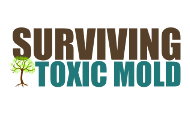Are all molds toxic?
Not all molds are toxic. Some molds that are harmless only grow spores that do not produce any biotoxins. However, there are thousands of mold species that DO PRODUCE mycotoxins that have the toxic effects attributed to "dangerous" mold.
Contrary to popular "internet searches", it is extremely common to find the more aggressive forms of toxic molds that DO PRODUCE mycotoxin that one would believe. In fact, most homes contain at least 2 toxic mold species somewhere in the home. NOTE: If these types of "toxic molds" are present in SMALL AMOUNTS, they pose no significant threat. However, if they are elevated in any way they can be a serious threat when activate by moisture. These forms of "toxic" mold are NOT ONLY life-threatening to infants, the elderly, or those with weakened immune systems but they can actually "SUPPRESS THE IMMUNE SYSTEM" of (Perfectly Healthy Individuals).
Can you identify which molds are harmless vs which molds are toxic just by looking at it?
You can’t simply point to specific molds (visually) as the “toxic” kind or the “harmless” kind. While mycotoxins are almost universally toxic, other molds are allergenic and still others are pathogenic. If you see visible mold, the only true way to identify if the species is "harmless" or "toxic" is to obtain a physical sample of the mold by using a safe method such as "swab sample" or "tape lifts" that are ordered by professional and certified laboratories that specifically test for toxic mold species. You can learn more about testing on my "Environmental Testing" page.
What is Toxic Mold?
Molds (also spelled "moulds") are ubiquitous in the biosphere, and mold spores are a common component of household and workplace dust. The United States Centers for Disease Control and Prevention reported in its June 2006 report, 'Mold Prevention Strategies and Possible Health Effects in the Aftermath of Hurricanes and Major Floods,' that "excessive exposure to mold-contaminated materials can cause adverse health effects in susceptible persons regardless of the type of mold or the extent of contamination." When mold spores are present in abnormally high quantities, they can present especially hazardous health risks to humans, including allergic reactions or poisoning by mycotoxins, or causing fungal infection (mycosis).
Some molds produce dangerous neurotoxins called "MYCOTOXINS". This is what makes a mold a "Toxic Mold". If a mold spore species does NOT produce a mycotoxin it is NOT considered to be a "Toxic Mold". Here is a graphic to help you understand what spores are and what mycotoxins are.
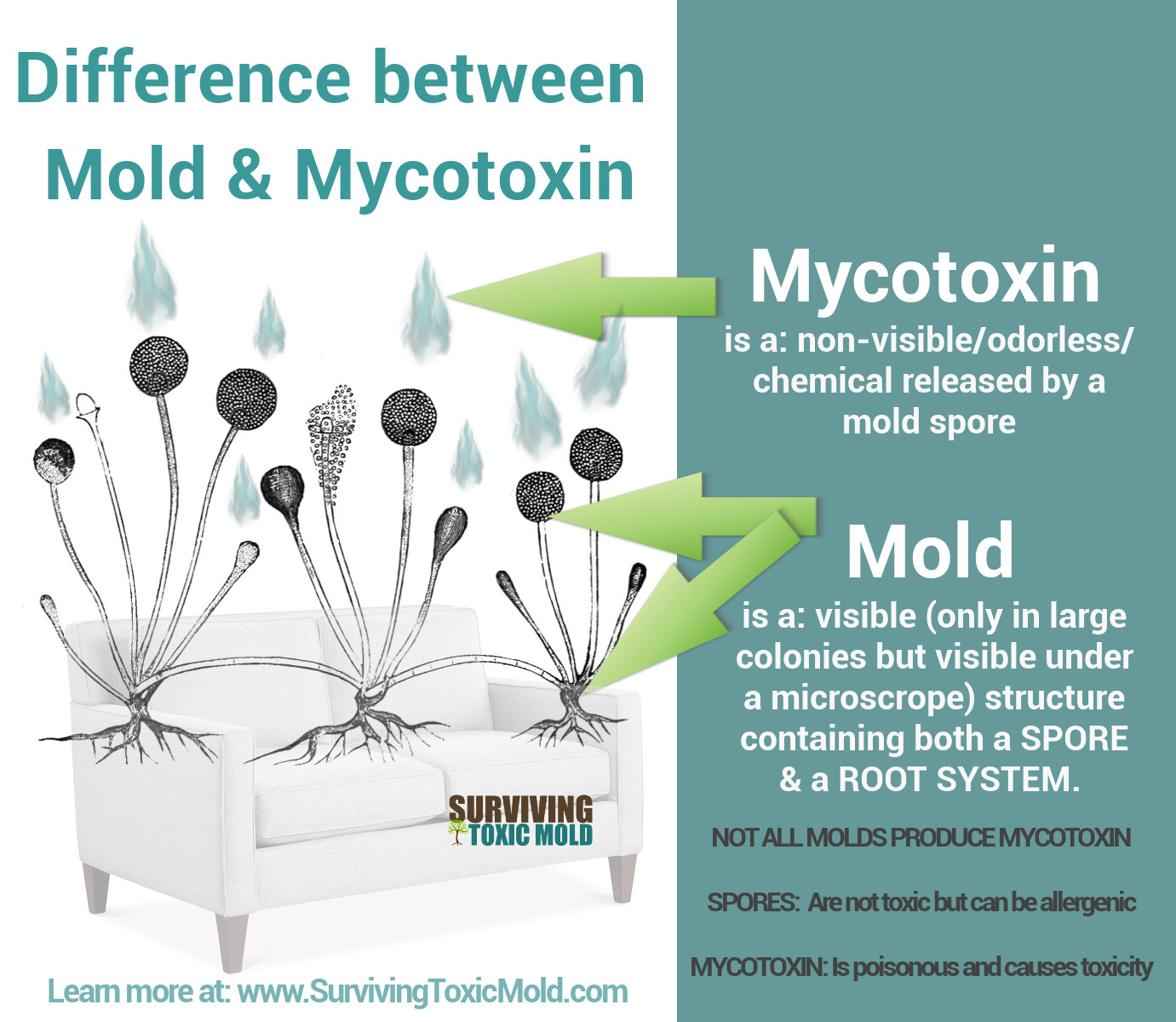
Facts about Mycotoxins
- They are not visible by the naked eye - Mycotoxin range in size from 1 micron all the way down to .03 microns. To put that in persepective a human hair is about 150 microns in size.
- They have no odor
- They can penetrate through walls and porous items - https://www.healthylivingmagazine.us/Articles/5114/
- They can cause extreme health effects in humans and animals
Toxic Mold can ruin your mitochondria
- Toxins that are produded by some species of mold are called "Mycotoxin". They are neurotoxic and genotoxic meaning they can cause DNA damage and mutate your DNA, which can lead to cancer. (R1) , (R2), (R3), (R4)
- These nuerotoxins can break down myelin (also called your myelin sheath) which is a layer of fat that insulates your neurons and allows them to send information throughout your brain. Myelin breakdown is the main cause of diagnosis such as multiple sclerosis, Parkinson’s, and Alzheimer’s. (R!), (R2), (R3)
- Toxic Mold is capable of contributing to neurodegenerative disease.They have the capability to damage your brain, and even studies have linked brain fungal infections to Alzheimer’s Disease. (R1)
What are some of the most common molds: toxic/non-toxic?
 Deadly Molds are in RED Deadly Molds are in RED
 Dangerous Molds are in ORANGE Dangerous Molds are in ORANGE
 Allergenic Molds are in YELLOW Allergenic Molds are in YELLOW
Mold is always associated with moisture, and its growth can be inhibited by keeping humidity levels below 50%. Moisture problems causing mold growth can be direct such as a water leaks and/or indirect such as condensation due to humidity levels.
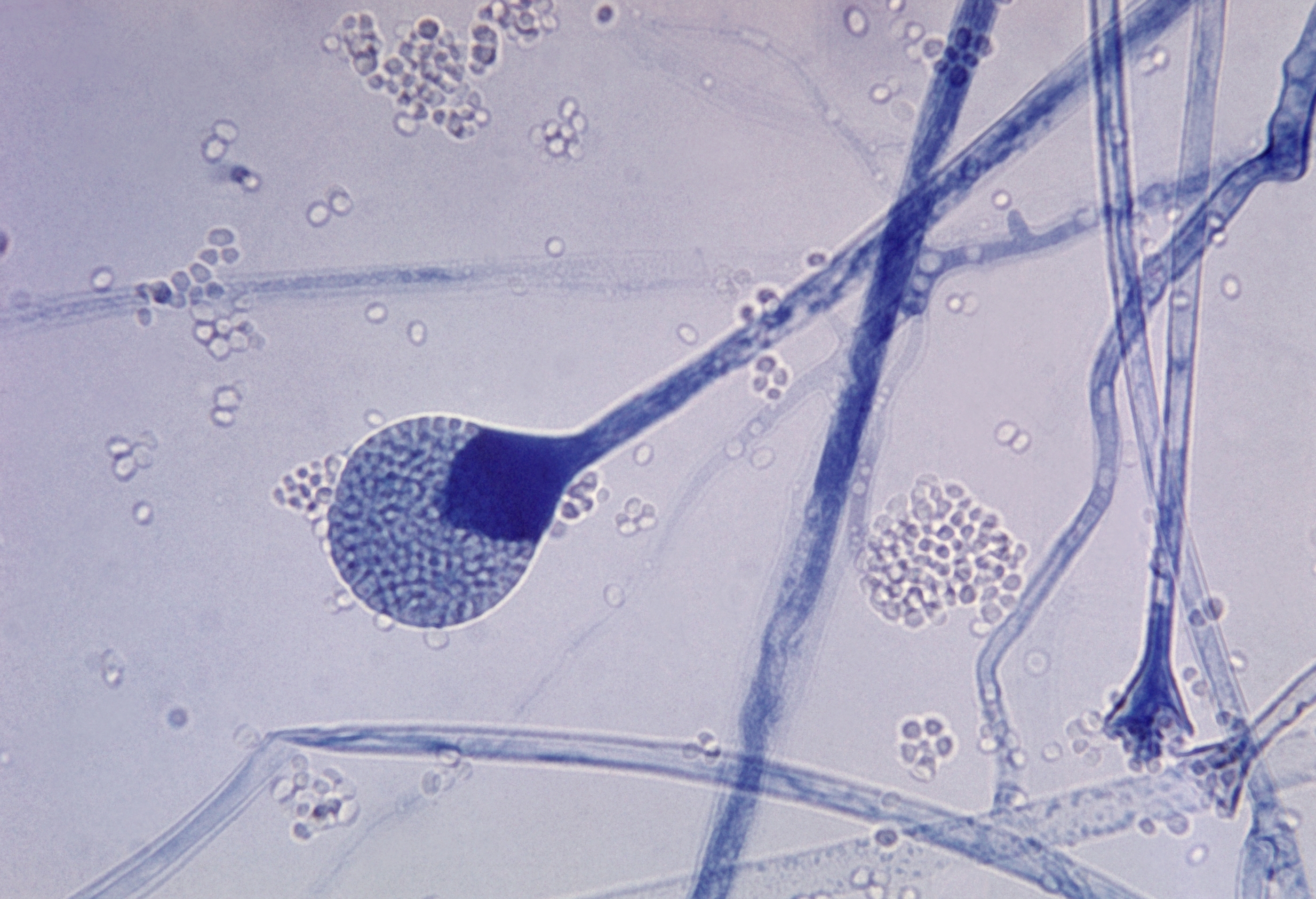  Absidia sp – A zygomycete fungus which is considered common to the indoor environment. Reported to be allergenic. May cause mucorosis in immune compromised individuals. The sites of infection are the lung, nasal sinus, brain, eye, and skin. Infection may have multiple sites. Absidia cormbifera has been an invasive infection agent in AIDS and neutropenic patients, as well as, agents of bovine mycotic abortions, and feline subcutaneous abscesses. Acremonium species may be confused with Fusarium species that primarily produce microconidia in culture. Fusarium genera are generally much more rapid growers and produce more aerial mycelium. Absidia sp – A zygomycete fungus which is considered common to the indoor environment. Reported to be allergenic. May cause mucorosis in immune compromised individuals. The sites of infection are the lung, nasal sinus, brain, eye, and skin. Infection may have multiple sites. Absidia cormbifera has been an invasive infection agent in AIDS and neutropenic patients, as well as, agents of bovine mycotic abortions, and feline subcutaneous abscesses. Acremonium species may be confused with Fusarium species that primarily produce microconidia in culture. Fusarium genera are generally much more rapid growers and produce more aerial mycelium.
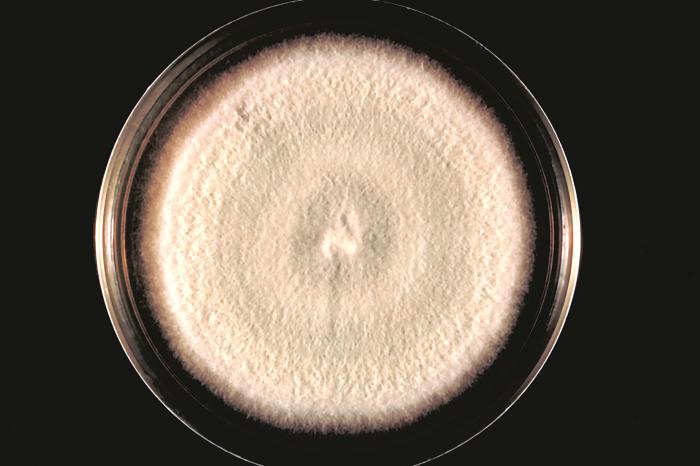  Acremonium sp (Cephalosporium sp.) – Reported to be allergenic. Can produce a trichothecene toxin which is toxic if ingested. It was the primary fungus identified in at least two houses where the occupant complaints were nausea, vomiting, and diarrhea. Asexual state of Emericellopsis sp., Chaetomium sp., and Nectripsis sp. It can produce mycetomas, infections of the nails, onychomycosis, corneal ulcers, eumycotic mycetoma, endophthalmitis, meningitis, and endocarditis Acremonium sp (Cephalosporium sp.) – Reported to be allergenic. Can produce a trichothecene toxin which is toxic if ingested. It was the primary fungus identified in at least two houses where the occupant complaints were nausea, vomiting, and diarrhea. Asexual state of Emericellopsis sp., Chaetomium sp., and Nectripsis sp. It can produce mycetomas, infections of the nails, onychomycosis, corneal ulcers, eumycotic mycetoma, endophthalmitis, meningitis, and endocarditis
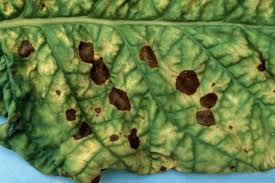  Alternaria sp – Extremely widespread and ubiquitous. Outdoors it may be isolated from samples of soil, seeds, and plants. It is commonly found in outdoor samples. It is often found in carpets, textiles, and on horizontal surfaces in building interiors. Often found on window frames. The species Alternaria alternata is capable of producing tenuazonic acid and other toxic metabolites which may be associated with disease in humans or animals. Alternaria produces large spores having sizes between 20 – 200 microns in length and 7 – 18 microns in width, suggesting that the spores from this fungi are deposited in the nose, mouth, and upper respiratory tract. It may be related to bakers asthma. It has been associated with hypersensitivity pneumoniti, sinusitis, deratomycosis, onychomycosis, subcutaneous phaeohyphomycosis, and invasive infection. Common cause of extrinsic asthma (immediate-type hypersensitivity: type I). Acute symptoms include edema and bronchiospasms, chronic cases may develop pulmonary emphysema. Alternaria sp – Extremely widespread and ubiquitous. Outdoors it may be isolated from samples of soil, seeds, and plants. It is commonly found in outdoor samples. It is often found in carpets, textiles, and on horizontal surfaces in building interiors. Often found on window frames. The species Alternaria alternata is capable of producing tenuazonic acid and other toxic metabolites which may be associated with disease in humans or animals. Alternaria produces large spores having sizes between 20 – 200 microns in length and 7 – 18 microns in width, suggesting that the spores from this fungi are deposited in the nose, mouth, and upper respiratory tract. It may be related to bakers asthma. It has been associated with hypersensitivity pneumoniti, sinusitis, deratomycosis, onychomycosis, subcutaneous phaeohyphomycosis, and invasive infection. Common cause of extrinsic asthma (immediate-type hypersensitivity: type I). Acute symptoms include edema and bronchiospasms, chronic cases may develop pulmonary emphysema.
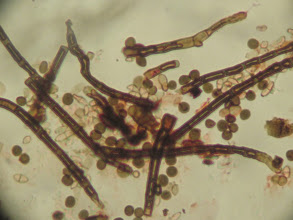  Arthrinium phaeospermum- Widespread saprophyte on dead plant material, particularly swampy grasses. Should be considered an allergen. This fungus has also been documented in various subcutaneous infections. No toxic related diseases are of record to date. Arthrinium phaeospermum- Widespread saprophyte on dead plant material, particularly swampy grasses. Should be considered an allergen. This fungus has also been documented in various subcutaneous infections. No toxic related diseases are of record to date.
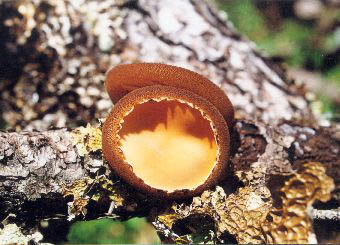  Ascomycete.- (More details about Ascomycete here) One of the major classes of fungal organisms. This class contains the the”sac fungi” and yeasts. Some ascomycete spores can be identified by spore morphology, however; some care should be excersised with regard to specific identification. Many ascomycete spores are reported to be allergenic. Ascomycete.- (More details about Ascomycete here) One of the major classes of fungal organisms. This class contains the the”sac fungi” and yeasts. Some ascomycete spores can be identified by spore morphology, however; some care should be excersised with regard to specific identification. Many ascomycete spores are reported to be allergenic.
  Aspergillus sp – (More details about Aspergillus here) A genus of fungi containing approximately 150 recognized species. Members of this genus have been recovered from a variety of habitats, but are especially common as saprophytes on decaying vegetation, soils, stored food, feed products in tropical and subtropical regions. Some species are parasitic on insects, plants and animals, including man. Species within this genus have reported Aw’s (water activities) between 0.75 – 0.82. All of the species contained in this genus should be considered allergenic. Various Aspergillus species are a common cause of extrinsic asthma (immediate-type hypersensitivity: type I). Acute symptoms include edema and bronchiospasms. Chronic cases may develop pulmonary emphysema. Members of this genus are reported to cause a variety of opportunistic infections of the ears and eyes. Sever pulmonary infections may also occur. Many species produce mycotoxins which may be associated with disease in humans and other animals. Toxin production is dependent on the species or a strain within a species and on the food source for the fungus. Some of these toxins have been found to be carcinogenic in animal species. Several toxins are considered potential human carcinogens. Aspergillus sp – (More details about Aspergillus here) A genus of fungi containing approximately 150 recognized species. Members of this genus have been recovered from a variety of habitats, but are especially common as saprophytes on decaying vegetation, soils, stored food, feed products in tropical and subtropical regions. Some species are parasitic on insects, plants and animals, including man. Species within this genus have reported Aw’s (water activities) between 0.75 – 0.82. All of the species contained in this genus should be considered allergenic. Various Aspergillus species are a common cause of extrinsic asthma (immediate-type hypersensitivity: type I). Acute symptoms include edema and bronchiospasms. Chronic cases may develop pulmonary emphysema. Members of this genus are reported to cause a variety of opportunistic infections of the ears and eyes. Sever pulmonary infections may also occur. Many species produce mycotoxins which may be associated with disease in humans and other animals. Toxin production is dependent on the species or a strain within a species and on the food source for the fungus. Some of these toxins have been found to be carcinogenic in animal species. Several toxins are considered potential human carcinogens.
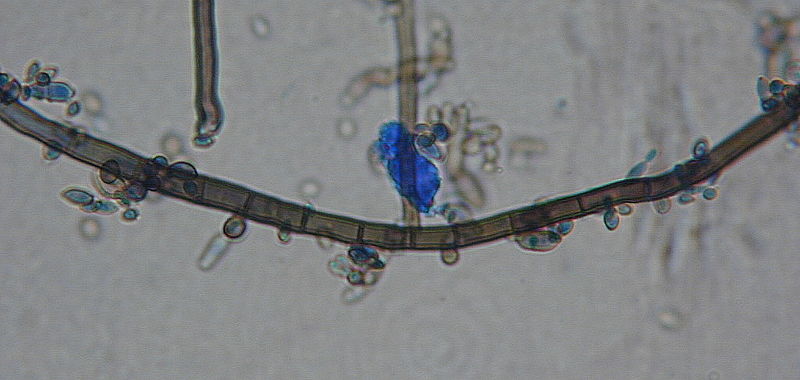  Aureobasidium pullulans – (More details about Aureobasidium Pullulans here) A cosmopolitan fungus with the main habitat apparently on the aerial parts of plants. Frequently found in moist environments. This fungus should be considered allergenic. This species has been associated with deratitis, peritonitis, pulmaonary infection, and invasive disease in AIDS patients. Probably aquired by traumatic implantation. May be recovered as a contaminant from human cutaneous sites. No toxic diseases have been documented to date. Aureobasidium pullulans – (More details about Aureobasidium Pullulans here) A cosmopolitan fungus with the main habitat apparently on the aerial parts of plants. Frequently found in moist environments. This fungus should be considered allergenic. This species has been associated with deratitis, peritonitis, pulmaonary infection, and invasive disease in AIDS patients. Probably aquired by traumatic implantation. May be recovered as a contaminant from human cutaneous sites. No toxic diseases have been documented to date.
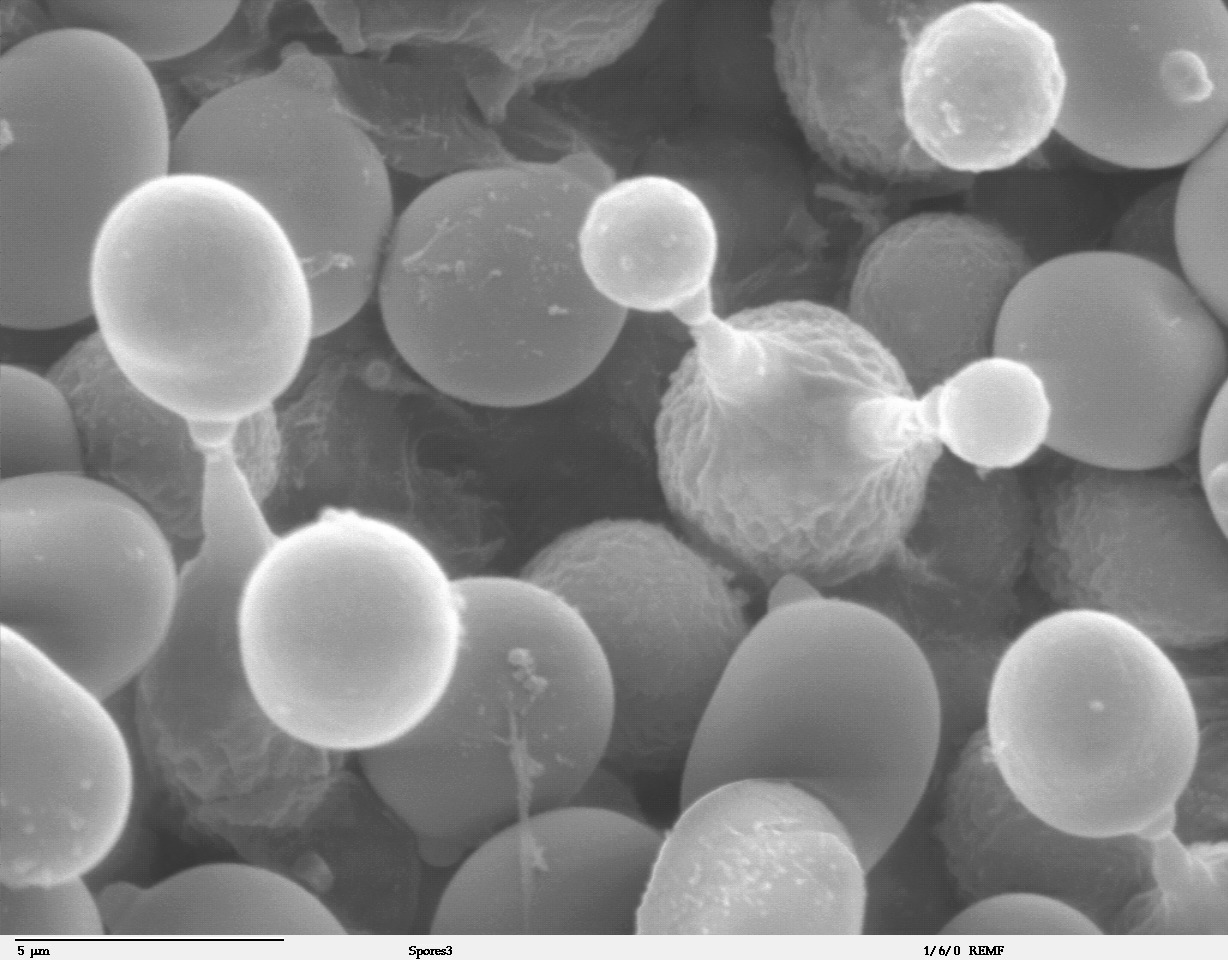  Basidiomycetes – One of the major classes of fungal organisms. This class contains the mushrooms, shelf fungi, puffballs, and a variety of other macrofungi. It is extremely difficult to identify a specific genera of mushrooms by using standard culture plate techniques. Some basidiomycete spores can be identified by spore morphology, however; some care should be exercised with regard to specific identification. Many basidiomycete spores or "Basidiospores" are reported to be allergenic. Basidiomycetes – One of the major classes of fungal organisms. This class contains the mushrooms, shelf fungi, puffballs, and a variety of other macrofungi. It is extremely difficult to identify a specific genera of mushrooms by using standard culture plate techniques. Some basidiomycete spores can be identified by spore morphology, however; some care should be exercised with regard to specific identification. Many basidiomycete spores or "Basidiospores" are reported to be allergenic.
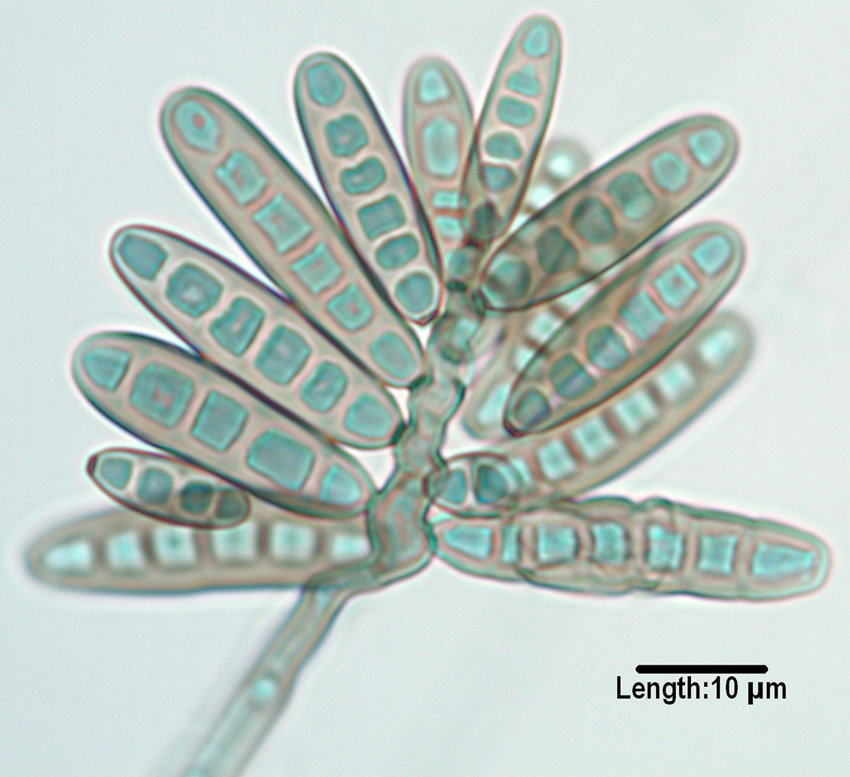  Bipolaris sp – A widespread fungus that is most frequently associated with grasses, plant material, decaying food, and soil. It is common to both indoor and outdoor environments. Older obsolete names include Drechslera and Helminthosporium. This fungus produces large spores which would be expected to be deposited in the upper respiratory tract. Various species of this fungus can produce the mycotoxin – sterigmatocystin which has been shown to produce liver and kidney damage when ingested by laboratory animals. Bipolaris sp – A widespread fungus that is most frequently associated with grasses, plant material, decaying food, and soil. It is common to both indoor and outdoor environments. Older obsolete names include Drechslera and Helminthosporium. This fungus produces large spores which would be expected to be deposited in the upper respiratory tract. Various species of this fungus can produce the mycotoxin – sterigmatocystin which has been shown to produce liver and kidney damage when ingested by laboratory animals.
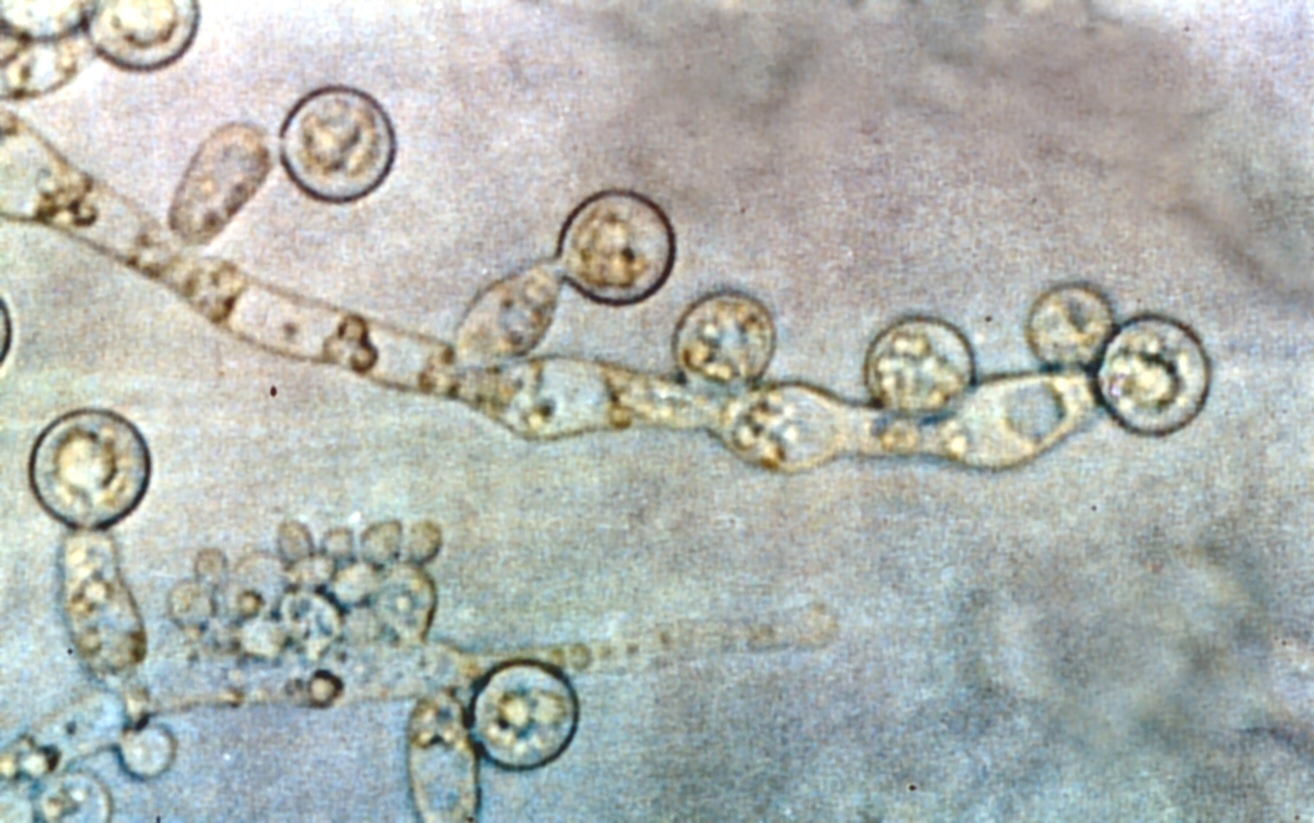  Candida sp – This genus contains a variety of organisms that have been isolated from the environment, as well as human skin and mucous membranes. Candida sp – This genus contains a variety of organisms that have been isolated from the environment, as well as human skin and mucous membranes.
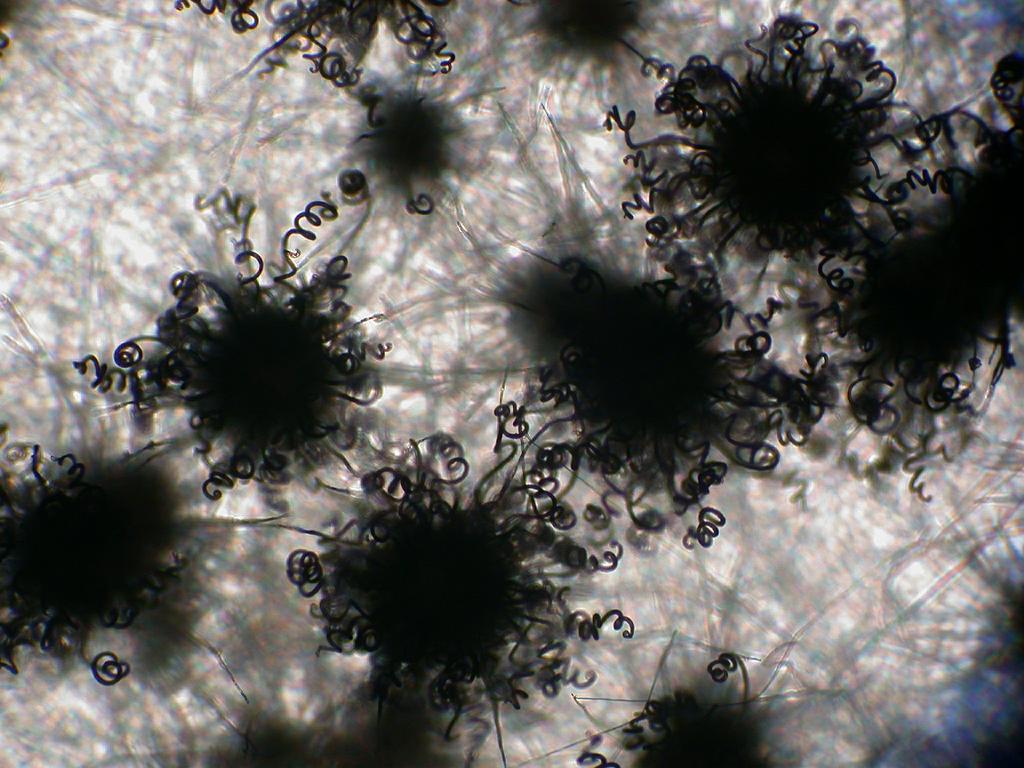  Chaetomium sp. – Large ascomycetous fungus producing perithecia. It is found on a variety of substrates containing cellulose including paper and plant compost. It can be readily found on the damp or water damaged paper in sheetrock. Chaetomium sp. – Large ascomycetous fungus producing perithecia. It is found on a variety of substrates containing cellulose including paper and plant compost. It can be readily found on the damp or water damaged paper in sheetrock.
Unlike most other mold pathogens, there is medical evidence to suggest that people who are exposed to Chaetomium may be predisposed to permanent neurological damage of the myelin sheath. Therefore, a noticeably high incidence of autoimmune diseases have been linked to exposure of this mold such as Multiple Sclerosis, Lupus etc. It has also been linked to certain forms of Cancer.
As with other fungal exposure, it can also cause permanent DNA damage. This has been documented in several cases being researched during studies. Chaetomium is the only mold that inhibits cell replication. READ MORE INFORMATION ABOUT Chaetomium HERE
 Chrysosporium spp – Widespread, common in the soil and on plants. Rare agents of onychomycosis, skin lesions, endocarditis, and uncommon agents of the pulmonary mycosis adiaspiromycosis. No toxic diseases have been documented to date. Chrysosporium spp – Widespread, common in the soil and on plants. Rare agents of onychomycosis, skin lesions, endocarditis, and uncommon agents of the pulmonary mycosis adiaspiromycosis. No toxic diseases have been documented to date.
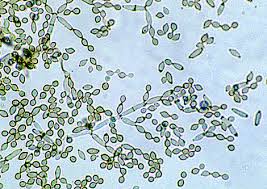  Cladosporium sp. (Hormodendrum sp.) – Aw (water activity) in the range of 0.84 to 0.88. Most commonly identified outdoor fungus. The outdoor numbers are reduced in the winter. The numbers are often high in the summer. Often found indoors in numbers less than outdoor numbers. It is a common allergen. Indoor Cladosporium sp. may be different than the species identified outdoors. It is commonly found on the surface of fiberglass duct liner in the interior of supply ducts. A wide variety of plants are food sources for this fungus. It is found on dead plants, woody plants, food, straw, soil, paint and textiles. It can cause mycosis. Produces greater than 10 antigens. Antigens in commercial extracts are of variable quality and may degrade within weeks of preparation. Common cause of extrinsic asthma (immediate-type hypersensitivity: type I). Acute symptoms include edema and bronchiospasms, chronic cases may develop pulmonary emphysema. Cladosporium sp. (Hormodendrum sp.) – Aw (water activity) in the range of 0.84 to 0.88. Most commonly identified outdoor fungus. The outdoor numbers are reduced in the winter. The numbers are often high in the summer. Often found indoors in numbers less than outdoor numbers. It is a common allergen. Indoor Cladosporium sp. may be different than the species identified outdoors. It is commonly found on the surface of fiberglass duct liner in the interior of supply ducts. A wide variety of plants are food sources for this fungus. It is found on dead plants, woody plants, food, straw, soil, paint and textiles. It can cause mycosis. Produces greater than 10 antigens. Antigens in commercial extracts are of variable quality and may degrade within weeks of preparation. Common cause of extrinsic asthma (immediate-type hypersensitivity: type I). Acute symptoms include edema and bronchiospasms, chronic cases may develop pulmonary emphysema.
|
 Curvularia sp. – Reported to be allergenic. It may cause corneal infections, mycetoma and infections in immune compromised hosts. Curvularia sp. – Reported to be allergenic. It may cause corneal infections, mycetoma and infections in immune compromised hosts.
|
|
 Dreschlera sp – Conidia (spores) dimensions 40-120 x 17-28 microns. Found on grasses, grains and decaying food. It can occasionally cause a corneal infection of the eye. Dreschlera sp – Conidia (spores) dimensions 40-120 x 17-28 microns. Found on grasses, grains and decaying food. It can occasionally cause a corneal infection of the eye.
|
|
 Epicoccum sp. – Conidia (spores) dimensions 15-25 microns. A common allergen. It is found in plants, soil, grains, textiles, and paper products. Indoors it is found in floor, carpet and mattress dust, hospital air, and exposed acrylic paint. Health Effects Associated With Epicoccum nigrum Epicoccum nigrum poses inhalation health risks to persons with weak immune systems. Epicoccum sp. – Conidia (spores) dimensions 15-25 microns. A common allergen. It is found in plants, soil, grains, textiles, and paper products. Indoors it is found in floor, carpet and mattress dust, hospital air, and exposed acrylic paint. Health Effects Associated With Epicoccum nigrum Epicoccum nigrum poses inhalation health risks to persons with weak immune systems.
|
|
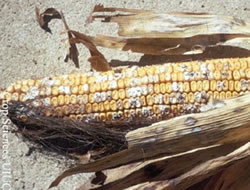  Fusarium sp – Aw (water activity) 0.90. A common soil fungus. It is found on a wide range of plants and most commonly corn and corn products. It is often found in humidifiers. Several species in this genus can produce potent trichothecene toxins (5, 27). The trichothecene (scirpene) toxin targets the following systems: circulatory, alimentary, skin, and nervous. Produces vomitoxin on grains during unusually damp growing conditions. Symptoms may occur either through ingestion of contaminated grains or possibly inhalation of spores. The genera can produce hemorrhagic syndrome in humans (alimentary toxic aleukia). This is characterized by nausea, vomiting, diarrhea, dermatitis, and extensive internal bleeding. Reported to be allergenic. Frequently involved in eye, skin and nail infections. Fusarium sp – Aw (water activity) 0.90. A common soil fungus. It is found on a wide range of plants and most commonly corn and corn products. It is often found in humidifiers. Several species in this genus can produce potent trichothecene toxins (5, 27). The trichothecene (scirpene) toxin targets the following systems: circulatory, alimentary, skin, and nervous. Produces vomitoxin on grains during unusually damp growing conditions. Symptoms may occur either through ingestion of contaminated grains or possibly inhalation of spores. The genera can produce hemorrhagic syndrome in humans (alimentary toxic aleukia). This is characterized by nausea, vomiting, diarrhea, dermatitis, and extensive internal bleeding. Reported to be allergenic. Frequently involved in eye, skin and nail infections.
|
|
 Geotrichum sp. – Aw (water activity) 0.90. Conidia (spores) dimensions 6-12 x 3-6 microns. Aw (water activity) 0.90. A common contaminant of grains, fruits, dairy products, paper, textiles, soil and water, and often present as part of the normal human flora. The species Geotrichum candidum can cause a secondary infection (geotrichosis) in association with tuberculosis. This rare disease can cause lesions of the skin, bronchi, mouth, lung, and intestine. Geotrichum sp. – Aw (water activity) 0.90. Conidia (spores) dimensions 6-12 x 3-6 microns. Aw (water activity) 0.90. A common contaminant of grains, fruits, dairy products, paper, textiles, soil and water, and often present as part of the normal human flora. The species Geotrichum candidum can cause a secondary infection (geotrichosis) in association with tuberculosis. This rare disease can cause lesions of the skin, bronchi, mouth, lung, and intestine.
|
|
 Mucor sp. – Often found in soil, dead plant material, horse dung, fruits, and fruit juice. It is also found in leather, meat, dairy products, animal hair, and jute. A Zygomycetes fungus which may be allergenic (skin and bronchial tests) (7, 17). This organism and other Zygomycetes will grow rapidly on most fungal media. May cause mucorosis in immune compromised individuals. The sites of infection are the lung, nasal sinus, brain, eye, and skin. Infection may have multiple sites. Mucor sp. – Often found in soil, dead plant material, horse dung, fruits, and fruit juice. It is also found in leather, meat, dairy products, animal hair, and jute. A Zygomycetes fungus which may be allergenic (skin and bronchial tests) (7, 17). This organism and other Zygomycetes will grow rapidly on most fungal media. May cause mucorosis in immune compromised individuals. The sites of infection are the lung, nasal sinus, brain, eye, and skin. Infection may have multiple sites.
|
|
 Nigrospora sp – Reported to be allergenic. Nigrospora sp – Reported to be allergenic.
|
|
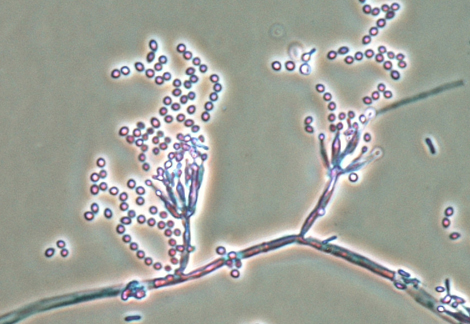  Paecilomyces sp – Commonly found in soil and dust, less frequently in air. P. variotii can cause paecilomycosis. Linked to wood-trimmers disease and humidifier associated illnesses. They are reported to allergenic. Some members of this genus are reported to cause pneumonia. It may produce arsine gas if growing on arsenic substrate. This can occur on wallpapers covered with paris green. Paecilomyces species are common environmental moulds and are seldom associated with human infection. However, the species, P. variotii and P. marquandii are emerging as causative agents of mycotic keratitis and of hyalohyphomycosis Paecilomyces sp – Commonly found in soil and dust, less frequently in air. P. variotii can cause paecilomycosis. Linked to wood-trimmers disease and humidifier associated illnesses. They are reported to allergenic. Some members of this genus are reported to cause pneumonia. It may produce arsine gas if growing on arsenic substrate. This can occur on wallpapers covered with paris green. Paecilomyces species are common environmental moulds and are seldom associated with human infection. However, the species, P. variotii and P. marquandii are emerging as causative agents of mycotic keratitis and of hyalohyphomycosis
|
|
  Papulospora sp. – This fungi is found in soil, textiles, decaying plants, manure, and paper. Papulospora sp. – This fungi is found in soil, textiles, decaying plants, manure, and paper.
|
|
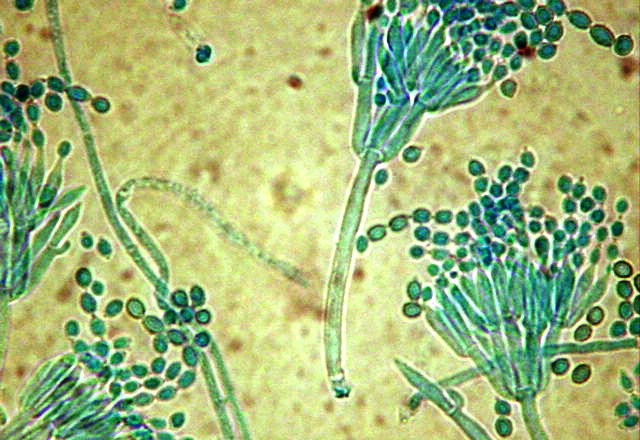  Penicillium sp – Aw (water activity) 0.78 – 0.88. A wide number of organisms have placed in this genera. Identification to species is difficult. Often found in aerosol samples. Commonly found in soil, food, cellulose, and grains (17, 5). It is also found in paint and compost piles. It may cause hypersensitivity pneumonitis and allergic alveolitis in susceptible individuals. It is reported to be allergenic (skin) (7, 17). It is commonly found in carpet, wallpaper, and in interior fiberglass duct insulation (NC). Some species can produce mycotoxins. Common cause of extrinsic asthma (immediate-type hypersensitivity: type I). Acute symptoms include edema and bronchiospasms, chronic cases may develop pulmonary emphysema. Penicillium sp – Aw (water activity) 0.78 – 0.88. A wide number of organisms have placed in this genera. Identification to species is difficult. Often found in aerosol samples. Commonly found in soil, food, cellulose, and grains (17, 5). It is also found in paint and compost piles. It may cause hypersensitivity pneumonitis and allergic alveolitis in susceptible individuals. It is reported to be allergenic (skin) (7, 17). It is commonly found in carpet, wallpaper, and in interior fiberglass duct insulation (NC). Some species can produce mycotoxins. Common cause of extrinsic asthma (immediate-type hypersensitivity: type I). Acute symptoms include edema and bronchiospasms, chronic cases may develop pulmonary emphysema.
|
|
 Phoma sp. – A common indoor air allergen. It is similar to the early stages of growth of Chaetomium sp. The species are isolated from soil and associated plants (particularly potatoes). Produces pink and purple spots on painted walls (3, 17). It may have antigens which cross-react with those of Alternaria sp. It will grow on butter, paint, cement, and rubber. It may cause phaeohyphomycosis, a systematic or subcutaneous disease. Phoma sp. – A common indoor air allergen. It is similar to the early stages of growth of Chaetomium sp. The species are isolated from soil and associated plants (particularly potatoes). Produces pink and purple spots on painted walls (3, 17). It may have antigens which cross-react with those of Alternaria sp. It will grow on butter, paint, cement, and rubber. It may cause phaeohyphomycosis, a systematic or subcutaneous disease.
|
|
 Pithomyces sp. – Grows on dead grass in pastures. Causes facial eczema in ruminants. Pithomyces sp. – Grows on dead grass in pastures. Causes facial eczema in ruminants.
|
|
 Rhizomucor sp. – The Zygomycetous fungus is reported to be allergenic. It may cause mucorosis in immune compromised individuals. It occupies a biological niche similar to Mucor sp. It is often linked to occupational allergy. The sites of infection are the lung, nasal sinus, brain, eye, and skin. Infection may have multiple sites. Rhizomucor sp. – The Zygomycetous fungus is reported to be allergenic. It may cause mucorosis in immune compromised individuals. It occupies a biological niche similar to Mucor sp. It is often linked to occupational allergy. The sites of infection are the lung, nasal sinus, brain, eye, and skin. Infection may have multiple sites.
|
|
 Rhizopus sp – The Zygomycetous fungus is reported to be allergenic. It may cause mucorosis in immune compromised individuals. It occupies a biological niche similar to Mucor sp. It is often linked to occupational allergy. The sites of infection are the lung, nasal sinus, brain, eye, and skin. Infection may have multiple sites. Rhizopus sp – The Zygomycetous fungus is reported to be allergenic. It may cause mucorosis in immune compromised individuals. It occupies a biological niche similar to Mucor sp. It is often linked to occupational allergy. The sites of infection are the lung, nasal sinus, brain, eye, and skin. Infection may have multiple sites.
|
|
 Rhodotorula sp – A reddish yeast typically found in moist environments such as carpeting, cooling coils, and drain pans. In some countries it is the most common yeast genus identified in indoor air. This yeast has been reported to be allergenic. Positive skin tests have been reported. It has colonized in terminally ill patients. Sporotrichum sp – Reported to be allergenic. See also Sporothrix sp. as there is some taxonomic confusion between these two genera. This genera does not cause sporotrichosis. Rhodotorula sp – A reddish yeast typically found in moist environments such as carpeting, cooling coils, and drain pans. In some countries it is the most common yeast genus identified in indoor air. This yeast has been reported to be allergenic. Positive skin tests have been reported. It has colonized in terminally ill patients. Sporotrichum sp – Reported to be allergenic. See also Sporothrix sp. as there is some taxonomic confusion between these two genera. This genera does not cause sporotrichosis.
|
  Stachybotrys sp. – Aw (water activity) – 0.94, optimum Aw (water activity) – >0.98. Several strains of this fungus (S. atra, S. chartarum and S. alternans are synonymous) may produce a trichothecene mycotoxin- Satratoxin H – which is poisonous by inhalation. The toxins are present on the fungal spores. This is a slow growing fungus on media. It does not compete well with other rapidly growing fungi. The dark colored fungi grows on building material with a high cellulose content and a low nitrogen content. Areas with relative humidity above 55% and are subject to temperature fluctuations are ideal for toxin production. Individuals with chronic exposure to the toxin produced by this fungus reported cold and flu symptoms, sore throats, diarrhea, headaches, fatigue, dermatitis, intermittent local hair loss, and generalized malaise. The toxins produced by this fungus will suppress the immune system affecting the lymphoid tissue and the bone marrow. Animals injected with the toxin from this fungus exhibited the following symptoms: necrosis and hemorrhage within the brain, thymus, spleen, intestine, lung, heart, lymph node, liver, and kidney. The mycotoxin is also reported to be a liver and kidney carcinogen. Affects by absorption of the toxin in the human lung are known as pneumomycosis. This organism is rarely found in outdoor samples. It is usually difficult to find in indoor air samples unless it is physically disturbed. The spores are in a gelatinous mass. Appropriate media for the growth of this organism will have a high cellulose content and a low nitrogen content. The spores will die readily after release. The dead spores are still allergenic and toxigenic. Percutaneous absorption has caused mild symptoms. LEARN MORE ABOUT STACHYBOTRYS HERE Stachybotrys sp. – Aw (water activity) – 0.94, optimum Aw (water activity) – >0.98. Several strains of this fungus (S. atra, S. chartarum and S. alternans are synonymous) may produce a trichothecene mycotoxin- Satratoxin H – which is poisonous by inhalation. The toxins are present on the fungal spores. This is a slow growing fungus on media. It does not compete well with other rapidly growing fungi. The dark colored fungi grows on building material with a high cellulose content and a low nitrogen content. Areas with relative humidity above 55% and are subject to temperature fluctuations are ideal for toxin production. Individuals with chronic exposure to the toxin produced by this fungus reported cold and flu symptoms, sore throats, diarrhea, headaches, fatigue, dermatitis, intermittent local hair loss, and generalized malaise. The toxins produced by this fungus will suppress the immune system affecting the lymphoid tissue and the bone marrow. Animals injected with the toxin from this fungus exhibited the following symptoms: necrosis and hemorrhage within the brain, thymus, spleen, intestine, lung, heart, lymph node, liver, and kidney. The mycotoxin is also reported to be a liver and kidney carcinogen. Affects by absorption of the toxin in the human lung are known as pneumomycosis. This organism is rarely found in outdoor samples. It is usually difficult to find in indoor air samples unless it is physically disturbed. The spores are in a gelatinous mass. Appropriate media for the growth of this organism will have a high cellulose content and a low nitrogen content. The spores will die readily after release. The dead spores are still allergenic and toxigenic. Percutaneous absorption has caused mild symptoms. LEARN MORE ABOUT STACHYBOTRYS HERE |
|
 Stemphylium sp. – Reported to be allergenic. Isolated from dead plants and cellulose materials. Stemphylium sp. – Reported to be allergenic. Isolated from dead plants and cellulose materials.
|
|
 Syncephalastrum sp. – Can cause a respiratory infection characterized by a solid fungal ball. Syncephalastrum sp. – Can cause a respiratory infection characterized by a solid fungal ball.
|
|
 Trichoderma sp – It is commonly found in soil, dead trees, pine needles, paper, and unglazed ceramics. It often will grow on other fungi. It produces antibiotics which are toxic to humans. It has been reported to be allergenic (7, 17). It readily degrades cellulose. Trichoderma sp – It is commonly found in soil, dead trees, pine needles, paper, and unglazed ceramics. It often will grow on other fungi. It produces antibiotics which are toxic to humans. It has been reported to be allergenic (7, 17). It readily degrades cellulose.
|
|
 Trichophyton sp – Can cause ring worm, athlete’s foot, skin, nail, beard, and scalp (5, 6). Reported to be allergenic. Found on soil and skin. Trichophyton sp – Can cause ring worm, athlete’s foot, skin, nail, beard, and scalp (5, 6). Reported to be allergenic. Found on soil and skin.
|
|
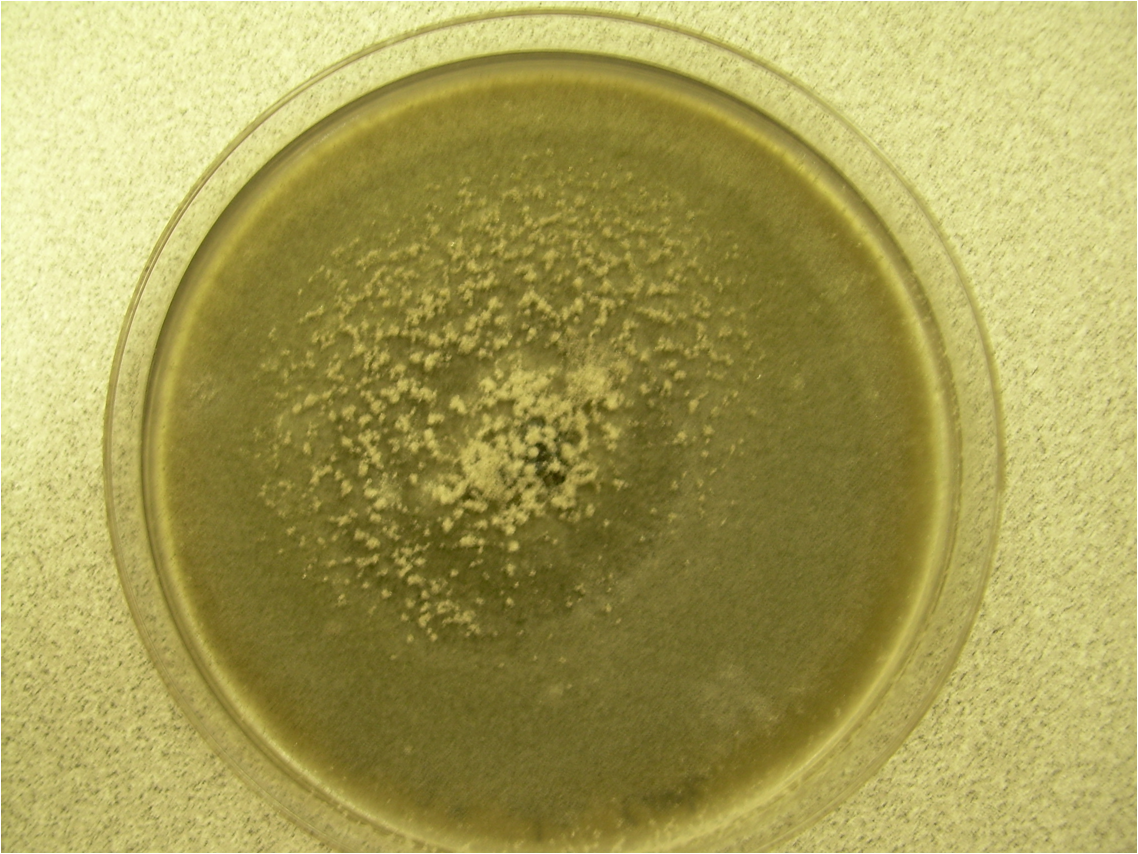  Ulocladium sp – Has an Aw (water activity) of 0.89. Isolated from dead plants and cellulose materials. Found on textiles and in water damaged indoor environments. Some species produce mycotoxins namely: curvularins was specific to Ulocladium atrum, while most species produced infectopyrones and derivatives of altertoxin I. and can be hazardous to humans, animals and plant life. https://www.ncbi.nlm.nih.gov/pubmed/18599140 Ulocladium sp – Has an Aw (water activity) of 0.89. Isolated from dead plants and cellulose materials. Found on textiles and in water damaged indoor environments. Some species produce mycotoxins namely: curvularins was specific to Ulocladium atrum, while most species produced infectopyrones and derivatives of altertoxin I. and can be hazardous to humans, animals and plant life. https://www.ncbi.nlm.nih.gov/pubmed/18599140
|
|
 Verticillium sp – Conidia (spores) dimensions 2.3-10 x 1-2.6 microns. Found in decaying vegetation, on straw, soil, and arthropods. A rare cause of corneal infections. Verticillium sp – Conidia (spores) dimensions 2.3-10 x 1-2.6 microns. Found in decaying vegetation, on straw, soil, and arthropods. A rare cause of corneal infections.
|
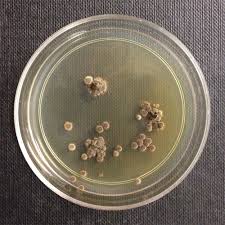  Wallemia sp – Has an Aw (water activity) of 0.75. Conidia (spores) dimensions 2.5-3.5 microns. Found in sugary foods, salted meats, dairy products, textiles, soil, hay, and fruits. So far only 3 species of Wallemia have been identified and named which are W. ichthyophaga, W. sebi, and W. muriae. Wallemia sebi is usually the most well known species. It has been found in air samples, ERMI and swab samples from indoor environments, duct/heating & air conditioning systems in indoor structures, soil, dried food (caused by spoilage) and salts. Because the species within the genus Wallemia have been identified just recently, not a lot is known right now about their mechanisms of adaptation to low water activity substrates. Wallemia sp – Has an Aw (water activity) of 0.75. Conidia (spores) dimensions 2.5-3.5 microns. Found in sugary foods, salted meats, dairy products, textiles, soil, hay, and fruits. So far only 3 species of Wallemia have been identified and named which are W. ichthyophaga, W. sebi, and W. muriae. Wallemia sebi is usually the most well known species. It has been found in air samples, ERMI and swab samples from indoor environments, duct/heating & air conditioning systems in indoor structures, soil, dried food (caused by spoilage) and salts. Because the species within the genus Wallemia have been identified just recently, not a lot is known right now about their mechanisms of adaptation to low water activity substrates.
Wallemia sebi can be seen world-wide. It is very common to be identified in indoor environments and has been isolated from jams, dates, bread, cakes, salted beans and fish, bacon, fruits, soil, hay, and textiles. It's also pretty common in agricultural environments where it has been implicated in the causes of farmer’s lung disease and other human allergies.
Wallemia sebi produces very tiny spores (even smaller than spores of some species of Penicillium or Aspergillus) that are reported to be highly allergenic. Their small size allows for efficient invasion into the respiratory system. Some strains of Wallemia produce mycotoxins called walleminol and walleminon and may cause sinus, throat or lung infections and allergic reactions(farmer’s lung disease) in humans.
|
|
 Yeast – Various yeasts are commonly identified on air samples. Some yeasts are reported to be allergenic. They may cause problems if a person has had previous exposure and developed hypersensitivity. Yeasts may be allergenic to susceptible individuals when present in sufficient concentrations. Candida is a form of yeast that if it gets out of control can actually kill the host. Yeast – Various yeasts are commonly identified on air samples. Some yeasts are reported to be allergenic. They may cause problems if a person has had previous exposure and developed hypersensitivity. Yeasts may be allergenic to susceptible individuals when present in sufficient concentrations. Candida is a form of yeast that if it gets out of control can actually kill the host.
|
|
